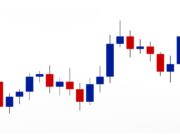It should be no secret to any of our readers by now that we love dividend stocks. There is a clear and overarching reason why: Regardless of any given dividend stock’s trading price, the best among them will offer peace of mind to an investor’s portfolio through quarterly payouts.
Some are considered more reliable than others, and the best way to make that distinction is to be sure the right stock metrics are there to sustain the payouts. Examples of such metrics include a positive free cash flow, a high payout ratio, and a beta score below 1 (which indicates safety from market volatility).
The greatest income-generating stocks should be well-established and have healthy balance sheets to ensure their robust dividends stay in place. Potential price appreciation helps, too.
I’ve landed on a few dividend payers that show incredible consistency and resiliency. Wall Street’s brightest experts and analysts concede that these should be bought and held…
Restaurant Brands International Inc (QSR)
First up on the list is Restaurant Brands International (QSR), the parent company of popular chains like Tim Horton’s, Burger King, Popeye’s, and Firehouse Subs, and its success is primarily driven by the success of these brands. With Patrick Doyle as Executive Chairman, QSR has triumphed over challenges and managed to see a notable increase in revenue. Appointing Doyle to the position last year was a strategic move, leveraging his success in his former role at Domino’s Pizza (DPZ). JP Morgan (JPM) anticipates improved financial performance due to QSR’s focus on “unit economics” and substantial restaurant growth worldwide, setting bullish projections for the stock. I’m sure they have embraced the challenge, and that confidence helps make QSR an attractive choice for income investors.
QSR is currently up year-to-date by 6.71% and is trading around the middle of its existing 52-week range, with a 0.60 beta score, positive TTM (trailing twelve-month) asset and momentum growth, and a 40.21% ROE (return on equity). For its Q2 2023 earnings report, QSR posted an EPS of $1.14 per share vs. $0.77 per share as expected by analysts (a 47.84% win), also beating analysts on revenue by 1.55%. QSR also
reported year-over-year growth in revenue (+8.3%) and net income (+2.12%). For the current fiscal quarter, QSR is expected to show $1.8 billion in sales at $0.84 per share, with a 3-5 year EPS growth rate of 5.4%. At a payout ratio of 66.67%, QSR has a 3.19% annual dividend yield and a quarterly payout of 55 cents ($2.20/year) per share. With a 10-day average volume of 1.65 million shares, QSR has a median price target of $82, with a high of $90 and a low of $70; this suggests a potential price upside of over 30%.
[stock_market_widget type=”accordion” template=”extended” color=”#5679FF” assets=”QSR” start_expanded=”true” display_currency_symbol=”true” api=”yf”]
Realty Income Corp (O)
Realty Income Corp. (O) stands out as a premier dividend stock, boasting a record of consistent dividend payouts over five decades. O’s diversified real estate portfolio, comprising both retail and commercial properties, ensures a reliable rental income stream, even during economic downturns. With a strong Q2 2023 occupancy rate of 99% and lease renewals at higher rates, O continues to exhibit resilience. As a REIT (Real Estate Investment Trust), O’s focus on its specialization in otherwise resistant market areas contributes to its stability, earning it the distinction of being one of just a few real estate trusts classified as “dividend aristocrats” with an A- or higher credit rating. Notably, O’s extensive portfolio comprises over 13,100 real estate properties, predominantly leased through long-term agreements. Recent
strategic investments, including acquiring a significant stake in the Bellagio casino and injecting $650 million in preferred equity, position O stock to profit from the resurgent market in Las Vegas.
O is currently down by 15.17% year-to-date and is trading at the very bottom of its existing high-low range, which gives the stock room to appreciate in price. With a 0.79 beta score, O has a free cash flow of $1.54 billion and over 20% in TTM asset growth. For Q2’s earnings call, O reported revenue of $995.29 million vs. $914.91 million as expected by analysts, beating their estimates by an 8.79% margin; during this same
period, it posted year-over-year growth in revenue (+26.85%) and operating income (+34.99%). For the present quarter, O is projected to report $970 million in sales at $0.33 per share. O has an annual dividend yield of 5.71%, a quarterly payout of 77 cents ($3.08/year) per share, and an astonishing 224.70% payout ratio. With a 10-day average volume of 6.07 million shares, O has a median price target of $68, with a high of $74 and a low of $59; this represents a possible price jump of 37.5% from its current position.
[stock_market_widget type=”accordion” template=”extended” color=”#5679FF” assets=”O” start_expanded=”true” display_currency_symbol=”true” api=”yf”]
Duke Energy Corp (DUK)
Last but not least is Duke Energy (DUK), which demonstrates resilience in the utilities sector, benefiting from stable demand and regulatory protections. DUK leverages geographic and economic advantages for its extensive customer base. As a public utility, it enjoys a natural monopoly that only enhances investment appeal. Despite a slight Q2 EPS miss, DUK reported revenue of $6.58 billion, surpassing expectations by around $50 million, or 8.53%, and maintained its 2023 EPS forecast, projecting a steady 5% to 7% growth rate in the years ahead. Offering a compelling dividend yield and embracing forward-looking initiatives such as an EV charging subscription service in North Carolina, DUK positions itself well for future profits.
Currently down year-to-date by 8.35%, DUK has been trading around the middle of its existing range, and with it comes a positive ROE, positive TTM asset growth, and a very attractive beta score of 0.48. As it recently showed year-over-year revenue growth during Q2, DUK is expected to report $8.1 billion in sales at $1.97 per share for Q3’s earnings call. With an operating free cash flow of $5.68 billion, DUK has a good amount of room in the books to offer income to its shareholders. DUK has a 4.34% annual dividend yield, a quarterly payout of $1.02 ($4.08/year) per share, and a generous 80.78% payout ratio. With a 10-day average trading volume of 4.43 million shares, DUK has a median price target of $97.50, with a high of $109 and a low of $91; this implies a potential price increase of almost 16% from today’s trading price. I’d understand if you need to read that bit about DUK’s dividend a second time.
[stock_market_widget type=”accordion” template=”extended” color=”#5679FF” assets=”DUK” start_expanded=”true” display_currency_symbol=”true” api=”yf”]







